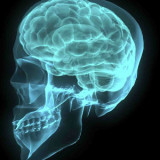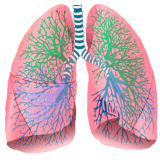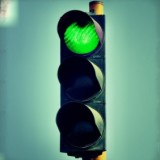 “The proof is in the pudding.”
“The proof is in the pudding.”
Originally, “the proof of the pudding is in the eating,” this idiom was shortened to its modern form sometime in the early 20th century. Etymologists believe the phrase originated in the 1600s and referred to a British pudding more akin to haggis (stuffed entrails) than tapioca.
The idiom applies to mindfulness because my words can only go so far. Readers must taste the fruits of practice to obtain proof of its validity.
It is one thing to read about the false nature of thoughts and emotions in the comfort of one’s armchair. However, it is quite a different thing to test oneself under the stressful prodding of day-to-day life.
Rather than proceed, as I too often do, into the Forest of Esotery, I will remain in the Plains of Practicality. I have chosen to focus on the emotion of anxiety because it predominates my life, and as such, I have the most experience with it. However, the steps that follow can apply to any emotion.
The steps and exercises are mere suggestions and are in no way meant to represent absolutes. There are a million ways to practice mindfulness just as there are a million ways to bake a pudding.
I have chosen to borrow the threat level schematic from our former terror alert system both for irony’s sake (it was responsible for untold anxiety) and for its familiarity.
 For those that require a refresher, the threat levels are as follows:
For those that require a refresher, the threat levels are as follows:
Red: Severe
Orange: High
Yellow: Elevated
Blue: Guarded
Green: Low
The reader will notice that this scale has no zero level. This illustrates a necessary point in our practice. No matter how long we walk the mindful path, we will always experience emotional turmoil. This turmoil is not a sign of our failure but of our humanity.
For each level I will give a hypothetical causative scenario as well as a suggested method of dealing with our anxiety. It must be noted that the method of stress reduction is only meant to get us over the hump, so to speak. Dealing with the entirety of the following problems requires a complex process beyond the scope of this article.
Also note that there is nothing linear about the different levels of anxiety. We may decrease from Red to Orange to Yellow, only to jump back up to Red.
Life is less of a Zen garden than it is a sandbox. We cannot imagine a point of perfection where anxiety ceases to exist. Our lives are an ever-evolving series of emotional states. It is our reaction to these states that gives them character; there is nothing inherent to the states themselves.
Red
Scenario: We have just had a colonoscopy or a mammogram, and the doctor found something. The doctor has taken a biopsy and has sent us home to await the results. The doctor has indicated that the preliminary examination didn’t look good.
For most of us, this scenario would cause a Red level of anxiety. The experience of this level of anxiety is a bit like being trapped in a washing machine during the spin cycle.
 Our neurons fire currents of worry that summate into a cacophony of fear, in which no intelligible thought can form. Our stomach curls in on itself, and we feel as if someone has poured molten lead down our esophagus. Our mouth feels as if we had stuck the business end of a hair dryer between our lips and turned it on high.
Our neurons fire currents of worry that summate into a cacophony of fear, in which no intelligible thought can form. Our stomach curls in on itself, and we feel as if someone has poured molten lead down our esophagus. Our mouth feels as if we had stuck the business end of a hair dryer between our lips and turned it on high.
What to do?
1. Appreciate Transiency: First, we must recognize that emotions of this degree are time limited. Like a torrential rain, their very intensity guarantees their limited duration. The average panic attack (anxiety on steroids) generally lasts no longer than half an hour. No matter our pain, we must realize that there is light at the end of the tunnel.
2. Get Moving: At this level of anxiety no amount of mental gymnastics will interrupt the cacophony of worry. Go for a walk, a run, or a bike ride. Use the physicality of your body to bypass your mind. Do not fight the emotions, just move your body! You will notice your body relax as you exercise. Your mind will follow, and before long you will find yourself in the Orange zone.
Orange
Scenario: We had an unexpected surgery 3 months ago and have just received the bill. Our insurance has a high deductible and we are on the hook for $10,000. We are already underwater in student loans and rent.
Again, we tend to feel this level of anxiety in our bodies. Maybe our stomach contracts in terror or our heart begins to forget the occasional beat. Whatever the manifestation, our anxiety rushes like a white water rapid without plunging into a Red waterfall of worry. As such, we can work more directly with this.
What to do?
Meditate: I would suggest meditation for this scenario. We are still at a high enough level of anxiety that logical thought will not be of any benefit, but not so high that we must completely bypass the mind to deal with it.
When we sit to meditate, we do not sit with any goal in mind. We do not try to reason our way through the scenario. We sit with the intention of sitting. That is all. We simply set a timer, get comfortable, and sit. We nonjudgmentally experience the bodily sensations and thoughts that come without any attempts at control or reasoning. We allow our mind free reign to express itself and try our best not engage.
We watch our thoughts, busy like rabbits, without ever following them down the rabbit hole.
After twenty minutes of meditation we will notice a certain distance develop between our Self and our worry. And if we are lucky, we may find ourselves in the Yellow zone of anxiety. (For more information about meditation see my post on Mindful Sitting)
Yellow
Scenario: We just took an exam in medical school and are convinced that we have failed. We had to pass this test to graduate, and we think that we bombed it. Our grade will not be back for another week, and we must sit with the uncertainty until then.
Neither our life nor our livelihood is threatened in this scenario, but it certainly generates anxiety. This level of anxiety is amenable to logical examination.
What to do?
Thought Record: This method is borrowed from Cognitive Behavioral Therapy and can be applied to all levels of anxiety. A thought record is a semi-scientific method of examining one’s own thought process and content. We write down the following:
1. Thought: “I failed”
2. Location/Situation: just took an exam
3. Type of thought: self-doubt
4. Emotion/Bodily sensation severity 1-10 (10 being the worst): 7/10
5. Facts that support the thought: the exam is generally known for being difficult
6. Facts that provide evidence against the thought: I’ve historically done well on tests, regardless of difficulty
7. Alternative interpretations of situation: Despite its difficulty, I likely did well on the exam
8. Re-rate emotion/bodily sensation severity: 5/10, after examining the situation my anxiety has decreased
The thought record is an invaluable tool and much more involved than my brief example demonstrates. A search of Google for “thought record” + “cognitive behavioral therapy” will provide numerous resources for those interested in reading further.
There are multiple benefits of regularly recording one’s thoughts. The process tends to distance us from our thoughts. The amorphous fear is forced into the light of day by the simple act of writing.
The character from a horror film is only scary as long as it lurks in the dark. Once the light of day reveals its full visage, the creature ceases to terrify. Our worries are like horror movie characters. When the white page before us reveals their fangs and claws to be effects department makeup, our terror is diminished. And with the absence of fear comes a more rational understanding of our worries.
The thought record also tends to reveal patterns in our thoughts; these patterns can map out the areas of our cognition that require effortful attention.
Blue
Scenario: We must give a presentation at work.
Some may experience this scenario as a Yellow or Orange level of anxiety. Nonetheless, the methodology of dealing with the anxiety is the same. At this low level of anxiety we can use the Wedge.
What to do?
The Wedge: the Wedge is an imaginary tool that helps us separate from our thoughts. We generate just enough distance from our thoughts so that we can examine them rationally.
In this scenario, the Wedge would be generated by examining the situation dispassionately. We have given presentations before, and despite their anxiety-provoking nature, we always survive and make it out the other side. Our anxiety is simply a bodily state, not unlike a cough or a runny nose. Our personal history demonstrates that a presentation is nothing that holds any real threat to the Self. With this Wedge we can separate from our anxiety and prepare for the presentation.
Green
Scenario: Life
 Our baseline emotional state involves the periodic experience of anxiety. There is nothing inherently wrong with anxiety. Anxiety drives us to attend to the world. When we think of anxiety, we think of an Orange or Red level. Very few of us appreciate the low level state of Anxious Drive.
Our baseline emotional state involves the periodic experience of anxiety. There is nothing inherently wrong with anxiety. Anxiety drives us to attend to the world. When we think of anxiety, we think of an Orange or Red level. Very few of us appreciate the low level state of Anxious Drive.
If we can see a low level anxiety as beneficial, it becomes an asset rather than a hindrance. And at this point we may well re-label “anxiety” as “drive” to avoid confusion.
What to do?
Live.




![MRI by Nevit Dilmen / [CC-BY-SA-3.0 or GFDL]](/wp-content/uploads/2014/07/brain-color-e1406157479540-160x160.jpg)






Great post Matthew.
Thanks so much! I appreciate you reading and love to hear the feedback.
– Matthew
Thanks so much for this. Crucial and empowering information!
Thanks Marty, I am so glad that this article resonated with you! Thanks!